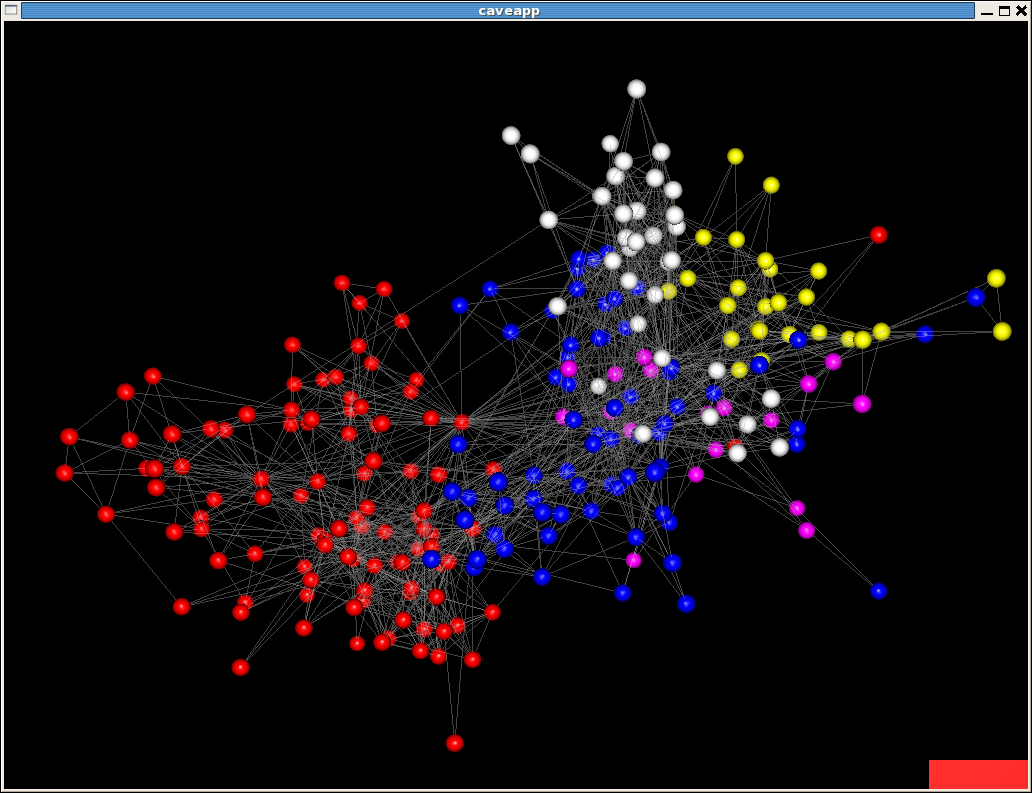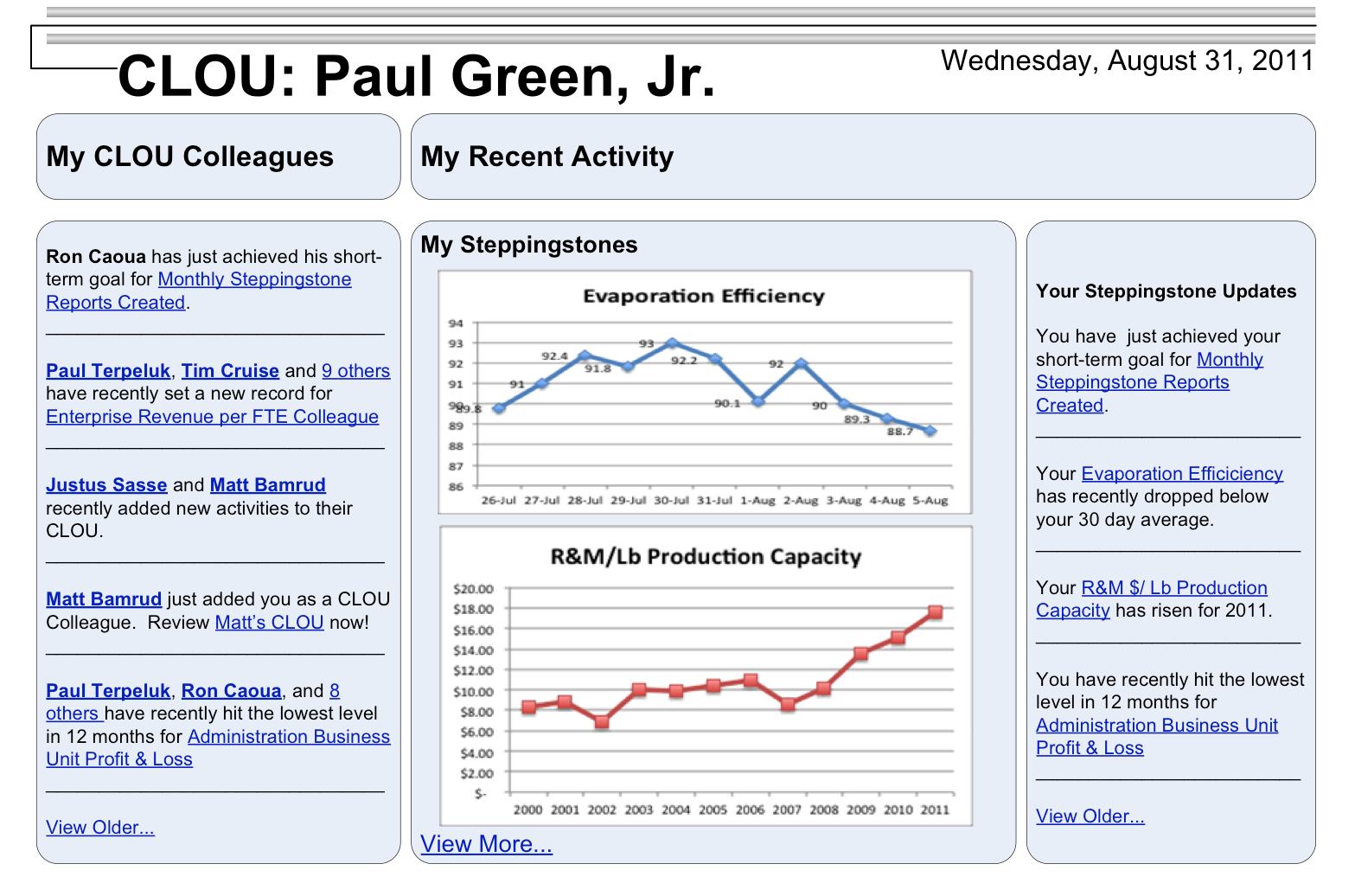The Morning Star Company is a world-leading vertically integrated food processing company. We began in 1970 when Chris Rufer, our founder, opened shop as a one-man owner/operator trucking company, hauling tomatoes from fields to tomato factories in California. We've grown rapidly and, today, are the world's largest processor of tomatoes, with vertically integrated operations ranging from fields (greenhouses, transplanting operations and farming operations), to harvesting and transportaion, and finally processing. We have facilities located through California's fertile San Joaquin and Sacramento valleys.
This article was originally posted on the Management Innovation eXchange (MIX), an open innovation project aimed at reinventing management for the 21st century.
Early in his career, Chris developed some unique ideas about management and organizations, and when he expanded into the processing business (building the first Morning Star factory) he met with all of Morning Star's colleagues (only a handful at the time) and they decided Morning Star would operate differently. At their first meeting, at a small farmhouse on a dirt road on the outskirts of Los Banos, CA (the temporary headquarters while the first factory was under construction) he asked the question: "what kind of company do we want this to be?". Their answers led to a fundamental philosophy about organizations—a philosophy that said:
People are happiest and most productive when they have personal control over their life. People are "thinking, energetic, creative and caring human beings of integrity" (from our Vision). The best human organizations are those in which people aren't managed by others, but in which participants coordinate among themselves, managing their own relationships and commitments to others. So, in that small farm in Central California, Morning Star was re-born as a fully self-managed enterprise. The company has never instituted any sort of formal hierarchy or managerial structure.
Some history
Chris reallzed in the early days that this new way of organizing, while it was attractive to all involved, and made intuitive sense to everyone within the company, would be easier to achieve when we were small. So, soon after those first colleagues laid out the idea of a fully self-managed enterprise, Chris came up with the idea of a document—a contract of sorts—between colleagues. It wouldn't be a job description, or an employment contract. Rather, it would be a tool that each colleague would use to outline his commitments to his fellow colleagues. Central to this idea of self-management was the realization that in an organization of any size, almost nothing happens in a vacuum; there are countless interdependencies amongst colleagues, and the strength of the organization depends on the degree to which each colleague clearly defines his commitments to his colleagues—and the degree to which he lives up to those commitments.
So, Chris proposed a framework for a document which he called the Colleague Letter of Understanding (or CLOU). This CLOU would be the primary tool that Morning Star colleagues would use to coordinate and organize themselves. Each colleague within the enterprise would have a CLOU—which they, personally, would be responsible for crafting in collaboration with their key colleagues (or, in Morning Star lingo, their "CLOU Colleagues"). This CLOU, when complete, would represent that colleague's commitment to his CLOU Colleagues. Each CLOU would include:
- Personal Commercial Mission: each colleague within Morning Star is responsible for crafting a Mission that represents their fundamental purpose wtihin the enterprise. This is intended to be their primary guiding light, the statement that should be the direction for all of their commercial activity within the enterprise.
- Activities: the key activities that the colleague agrees to accomplish in pursuit of their Personal Commercial Mission.
- Steppingstones: identifying the key measures (Morning Star lingo: "Steppingstones") by which the colleague gauges their performance in accomplishing those activities that they commit to, as well as the accomplishment of their mission.
- Time commitment: the amount of time the colleague agrees to commit to the accomplishment of their Mission.
- CLOU Colleagues: those colleagues to whom you are making these commitments. Your CLOU colleagues were to sign off on the CLOU indicating their agreement with all of the representations therein.
In the early days, the CLOU was exactly what is implied by the name: a letter—a paper document that each colleague filled out, at least annually, and then reviewed with his CLOU Colleagues to ensure agreement. As the company grew, though, and expanded into new areas with additional locations and an exponentially greater number of colleagues, it became evident that, while the fundamental premise was sound, and was built on a philosophy that all involved were even more committed to (it had, after all, helped to build a very successful company—and colleagues loved it), the CLOU document in its current form wasn't going to work in the long-term. A paper document filled out annually was a great start, but was easily forgotten—especially when you had a dozen colleagues you worked closely with. And so, when responsibility for a particular item was unclear, there was a need to go back to the "file" and pull out the current CLOU. Which prompted another pain point: Morning Star was growing...rapidly. Change was a constant, and an annual review of CLOUs was good, but wasn't nearly often enough to reflect the rapidly changing nature of the enterprise. So more often than not, change or uncertainty would breed hesitancy, and evenually someone would step in and just take on the issue at hand rather than circling back to the responsible colleague to try to address the performance gap (remember, we're self-managed, which means we are responsible for addressing failures of our colleagues to live up to their commitments; no "annointed" manager to run to).
Key innovations and timeline: The project
This was the state of things when, in 2006, I rejoined Morning Star. My recent business experience had birthed in me a passion for effective organizations, and when I came aboard, I wanted to work on advancing Self-Management. Chris laid out a vision for a more dynamic "digital" CLOU, and I began working on an outline. A few short months later, a new colleague, Ron Caoua who had extensive systems experience, came aboard to build the software.
Ron built the prototype, we demoed it, and then he worked with an outside developer to build the final version. We rolled it out in 2007 with much fanfare. We brought computers into the conference rooms at each of our locations, and brought groups of 15 or so colleagues in, one after another, to train them. It was a bit of a shock for some; some of our colleagues have had minimal experience working with computers. Over the course of a few weeks, though, we trained nearly everyone, and had helped nearly every colleague build their first CLOU.
The impact of the software was subtle, but important. First, it's dynamic; it has the ability to reflect the real changes in content or context of individual's responsibilities within the enterprise. In fact, a CLOU can now be changed daily, if necessary. Further, it allows colleagues to immediately view their colleagues' CLOUs—giving a much more ready view into who is responsible for what—even if a colleague isn't directly related to you. It, essentially, makes the world that is Morning Star a lot smaller.
For example, a colleague recently was telling me about an email he received that, initially, made him a little angry. It referred to problem the sender was having, and the sender was seeking his help in rectifying the particular problem. His initial response was to write a terse email in response that basically said, "this is YOUR job; figure it out and stop trying to pass the buck." But before he hit send, he decided to take a look at the senders CLOU; he was surprised to learn that the issue the sender had sent him wasn't any part of that colleague's Personal Mission. In fact, the sender had taken initiative to try to recruit my colleague, who they felt had the requisite expertise, to take care of the issue—a pretty important customer issue. My colleague spent some time looking through the CLOU system, and was able to identify someone whose mission the issue was somewhat related to; he approached them, outlined the issue and the needed change. That colleague ended up modifying his CLOU to incorporate the necessary process change.
This CLOU relationship model also provides a slightly different perspective as to how our organization is structured. In fact, I would say that the network of relationships forged through the various CLOU connections serves as our "org chart". It's not a traditional org chart, by any means: it's not based on any appointed hierarchy (remember, there are no titles and no formal hierarchy within Morning Star). But it's an org chart that's based on the real relationships within the enterprise—a network. It's also dynamic—in that it can change based on changing circumstances (and does), and contextual—in that the important relationships depend on the nature of the current situation. Below is a print of the network generated by a subset of our colleagues and their CLOU relationships. Identifying information has been removed, but it's color coded based upon physical location.

Moving forward
The CLOU system has been in place and utilized by most colleagues within the enterprise for nearly four years. While the application provides an effective platform for documenting colleague commitments and relationships, and is completely open and transparent, it is still somewhat static.
Our vision has always been to have a system that is foundational to how our colleagues coordinate, and we've made huge strides toward that vision by turning the CLOU into a more dynamic, social network based software. But implementing the software also served to expose new opportunities that we are currently working to take advantage of.
First, we realized that the network element of the CLOU could be enhanced if we could incorporate a colleague rating system into the software. In 2010, Ron and I, working with an outside software developer, rolled out a colleague review system that allows colleagues to review their CLOU Colleague's performance. The review (which is open—not anonymous) asks each person to provide very detailed feedback directly to each of their CLOU colleagues regarding that colleague's individual performance and success in achieving their commitments to the rating colleague.
We also, just this year, rolled out a web-based system called "Steppingstone". This software will serve as the backbone for our enterprise metric reporting. Our philosophy has always been that continuous improvement requires detailed performance reporting to each individual within the enterprise of data relating to each activity that they have accepted responsibility for. Steppingstone data historically, though, has always been fed back to colleagues through a melange of reports and systems, and hasn't historically been integrated into the CLOU software in any way—other than that colleagues list those steppingstones for which they commit to take responsibility from within the software.
We realized that what we have in place now is only the tip of the iceberg. Our revised vision for CLOU—which we are currently working on—completes the "loop". In our next version of the software, colleagues will be able to draw from a "menu" the specific activities that they are committing to. The software will still have the flexibility to allow any colleague within the enterprise to expand on the menu (that is, it won't be "locked down"), but edits will be to the "master" map of the enterprise, and colleagues will then associate themselves with segments of that map. This will enable a more graphically intuitive view of the enterprise, and the colleagues responsible for each area.
Equally important, though, is that when a colleague takes responsibility for activities by selecting them into his CLOU (in the forthcoming version) the corresponding Steppingstone measures will come along with those activities—as well as the relevant reports. This incorporates live (or close to real-time) reporting directly into the colleague's CLOU. Our vision is that the "home page" of the CLOU will turn into a sort of scrolling "feed" of information. Your home page will update to show updates to key Steppingstones, as well as a running feed of Steppingstone information for your CLOU Colleagues.

Challenges and solutions
The obvious challenge is the one that drove us to create this software in the first place:
Challenge:
How do you create a platform to enable effective self-organization amongst colleagues?
Solution:
CLOU, as a concept, is really central to how we organize at Morning Star. Conceptually, the idea of the CLOU isn't intuitive for many when they come aboard (and, in fact, we have integrated a CLOU planning segment into our Self-Management Orientation that all colleagues participate—and we have a handful of colleagues who are designated facilitators to assist colleagues, especially early on).
But once colleagues understand the CLOU, and really embrace, it becomes central to the way they work—in fact, while you don't necessarily hear colleagues discussing their CLOUs on a daily basis, they are really a central theme in colleague planning and coordinating conversations and discussions.
But, as indicated above, the static version wasn't quite as robust as we desired. CLOU version 1.0 has served us well, but we realized that it's more than just having an accessible platform to store and maintain CLOUs; the system needs to be dynamic—and actively feed colleagues performance information as it's happening—both their personal information, as well as that of their CLOU Colleagues. That's really the core of the improvements we are building now in CLOU 2.0.
I don't think that we could ever have envisioned this dynamic "feed" of information, though, without building this first version of the software—in large part because this network of relationships is fundamental to the "feed" concept.
Challenge:
Creating an organizational structure that's built by colleagues within the enterprise, but ensures we have "all the bases covered".
Solution:
This is one that we didn't really envision when we set out to build the software. The initial version of the software was structured so that all entries—all activities and all Steppingstones (performance measures)—were free-form; they were, essentially, created by the colleague creating his CLOU.
That's an OK way of handling it, and it actually has worked just fine, historically, but awhile back we begin to brainstorm, and ask ourselves, "can this tool be used to provide a clear picture of both 'who-has-what on their plate' as well as 'are all the bases covered'?". Our new version (the 2.0 version that hasn't been released yet) is built on a process platform. We've created an architecture that describes the enterprise in terms of process--and sub-process, and sub-sub-process, etc... And we've associated each of our vast number of Steppingstones (performance measures) with those processes and sub-processes. We're building a graphical interface that colleagues can interact with, both to accept responsibility for some process or sub-process (and the related Steppingstones) OR review who has accepted responsibility for them.
The underlying process architecture is still managed and maintained by everyone in the enterprise (in fact, it is handled something like a wiki—open to all colleagues to modify/add-to/subtract from as appropriate), and, in fact, the whole initial process architecture was populated by the colleagues across the enterprise. This was important to us because the process map of the enterprise should really be representative of all of the collected wisdom within the enterprise.
Benefits and metrics
Organizing is easier. Clear roles and responsibilities—and the ability to quickly, and openly, modify those roles and responsibilities, has greased the skids of the planning and coordinating process, and has made peer-regulation a little less challenging for colleagues.
"Real" hierarchies are more visible. We don't have formal hierarchy; rather, we believe authority should flow to you, willingly, by your colleagues, based on your expertise and achievements. This platform allows individuals to freely associate with colleagues based on their perceived abilities. The CLOU software, combined with our peer rating system and end of year compensation process, has begun to make visible the "natural" hierarchies that exist within the enterprise—and further, allows a clear view into the context of those hierarchies.
Lessons
A commitment between peers is much stronger than a job description. This was an assumption we had going into the project, and is really central to our organizational philosophy, but creating a system that facilitated this as we grew was a challenge. Part of the reason for this, I think is that...
Peer-control makes for a more cohesive group of colleagues. Our philosophy is sometimes mistaken for a "lack of management". That's not the case at all. We like to look at is as management rich. We ask everyone to become effective managers of their own mission, activities and CLOU relationships. That means they have to plan, coordinate—and sometimes even, deal with difficult performance issues—directly. But building a system that facilitates that planning and coordination to some degree has provided colleagues with a basis for peer-control, and has, in a sense, made this peer-regulation a bit easier.
The Strength of Self-Management is in the relationships between colleagues. We initially set out to create a basic software to allow CLOUs to be readily available, and more dynamic--and we achieved that. But the experience really brought into very clear focus the idea that the strength of the structure really depended on the strength of the commercial relationships between colleagues. Ironically, this idea that individual commitments between colleagues makes for a stronger organization has always been central to our philosophy, but our experience here really intensified this idea—and caused us to realize that the potential for this type of platform was enormous.
Our current enhancements are really meant to further strengthen those relationships. Imagine it as a social networking application of sorts, where your CLOU Colleague's individual performance information is piped to you as it is happening, and where you provide direct, subjective feedback to colleagues within your network. The technology here is key—and is really helping us to grow without sacrificing our principles of organizing.







1 Comment